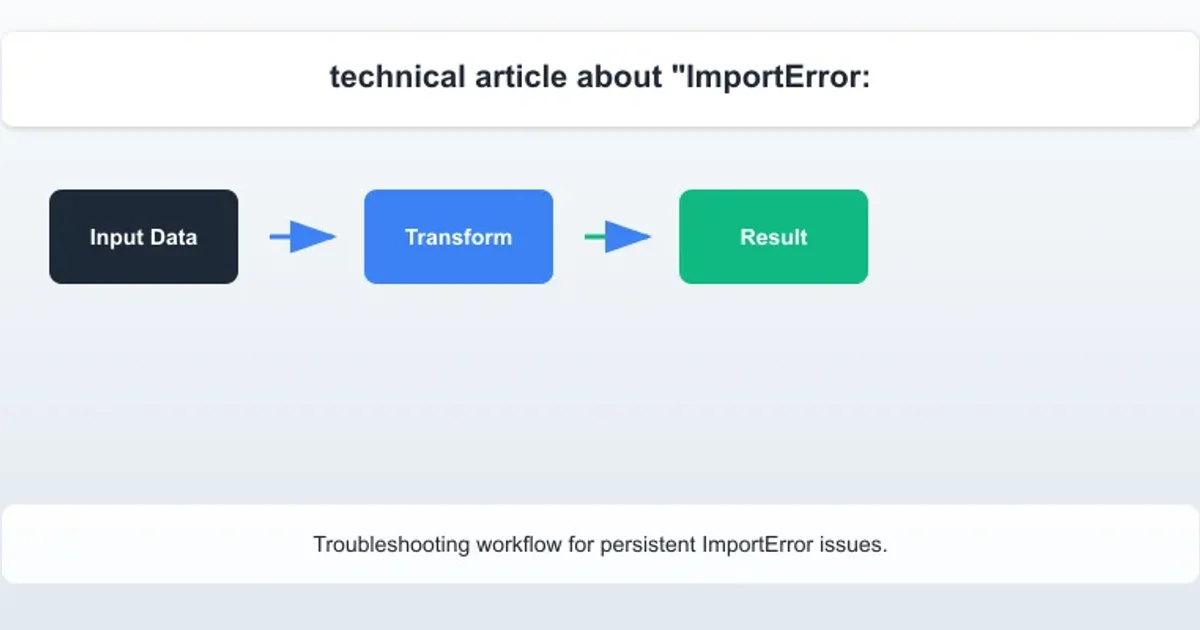ImportError: No module named PytQt5
Categories:
Resolving 'ImportError: No module named PyQt5' in Python

Encountering 'ImportError: No module named PyQt5' can halt your Python GUI development. This article provides comprehensive solutions to diagnose and fix this common issue, ensuring your PyQt5 applications run smoothly.
The ImportError: No module named PyQt5 is a frequent stumbling block for developers working with PyQt5, a popular Python binding for the Qt cross-platform application framework. This error typically indicates that the Python interpreter cannot locate the PyQt5 package, which is essential for running any PyQt5-based application. Understanding the root causes and applying the correct solutions is crucial for seamless GUI development.
Understanding the Root Cause
Before diving into solutions, it's important to understand why this error occurs. The ImportError means that when Python tries to execute an import PyQt5 statement, it cannot find the necessary files in its sys.path. This can be due to several reasons, including PyQt5 not being installed, being installed in a different Python environment, or issues with your system's PATH variables. The most common scenario is simply that the package hasn't been installed for the Python interpreter you are currently using.
flowchart TD
A[Start: Python Script Execution]
B{Import PyQt5?}
C[PyQt5 Module Found in sys.path]
D[PyQt5 Module NOT Found]
E[Script Continues]
F[ImportError: No module named PyQt5]
A --> B
B -->|Yes| C
C --> E
B -->|No| D
D --> FFlowchart illustrating the Python module import process and potential failure point.
Common Solutions and Installation Methods
The primary solution for this error is to ensure PyQt5 is correctly installed for the Python environment you are using. Python environments, especially virtual environments, can isolate packages, meaning an installation in one environment won't be available in another. Always verify which Python interpreter your IDE or terminal is using.
1. Verify Python Installation
First, confirm that Python is installed and accessible from your terminal. Open your command prompt or terminal and type python --version or python3 --version. This will show you the version of Python being used.
2. Install PyQt5 using pip
The most straightforward way to install PyQt5 is using pip, Python's package installer. Execute the command pip install PyQt5 or pip3 install PyQt5 in your terminal. If you are using a virtual environment, ensure it is activated before running this command.
3. Check for Virtual Environment Issues
If you're using a virtual environment (e.g., created with venv or conda), make sure it's activated. If PyQt5 was installed globally but your project uses a virtual environment, the environment won't see the global installation. Always install packages within the active virtual environment.
4. Verify Installation
After installation, open a Python interpreter (type python or python3 in your terminal) and try to import PyQt5: import PyQt5. If no error occurs, the installation was successful. You can also try from PyQt5.QtWidgets import QApplication to test a specific submodule.
pip within your activated virtual environment to avoid conflicts and ensure project dependencies are isolated. If you have multiple Python versions, explicitly use python3 -m pip install PyQt5 to target a specific interpreter.Troubleshooting Advanced Scenarios
Sometimes, the basic installation steps might not resolve the issue, especially in complex setups or when dealing with system-wide Python installations. Here are some advanced troubleshooting tips:
import sys
print(sys.path)
Checking Python's module search path.
The sys.path output will show you all the directories Python searches for modules. Ensure that the directory where PyQt5 is installed (usually within your site-packages folder) is listed here. If it's missing, it could indicate a corrupted Python installation or an incorrectly configured environment.
sys.path unless absolutely necessary and you understand the implications. Incorrect modifications can lead to further import issues or system instability.Reinstalling Python and PyQt5
In rare cases, a corrupted Python installation or conflicting packages might prevent PyQt5 from being recognized. As a last resort, consider a clean reinstallation of Python and then PyQt5. This ensures a fresh start and often resolves persistent issues.

Troubleshooting workflow for persistent ImportError issues.
By systematically following these steps, you should be able to resolve the ImportError: No module named PyQt5 and get your PyQt5 applications up and running. Remember to always check your Python environment and ensure packages are installed correctly for the interpreter you intend to use.